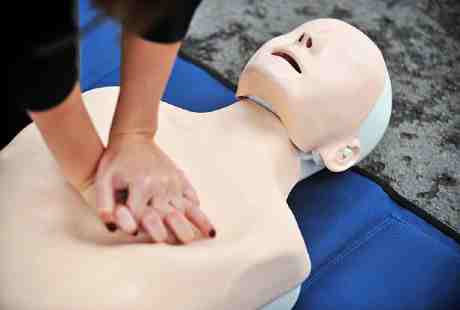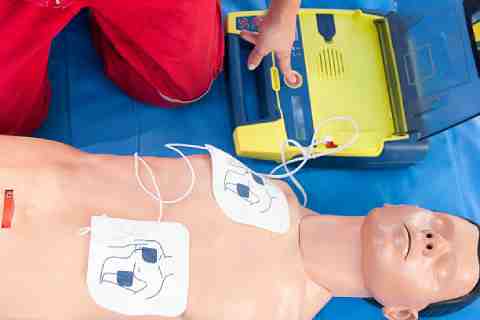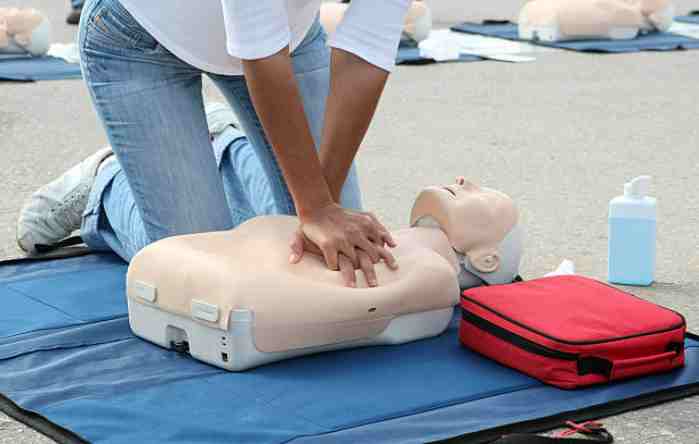Many people resist CPR training because they think it’s too time-consuming or because they fear the mouth-to-mouth resuscitation part. However, it takes only one to three hours to complete a CPR class.
You can choose from several classes that fit your needs and schedule. Some are fully online while others include practice sessions in person.
Time of Year

CPR classes are available throughout the year and it is easier than ever to get recertified. In the past, you had to rearrange your schedule to attend a class at a training center and it wasn’t always guaranteed that there would be a spot available for you or that it would fit in with your current obligations.
CPR skills tend to fade with time and it is recommended that you take a course every two years for renewal. New advancements in the medical field may also be introduced, and if you keep your certification up to date, you’ll be aware of these updates.
Taking the time to retrain will help you feel confident and prepared when performing the techniques, especially as more people die from cardiac arrest outside of hospital environments. Studies have shown that bystander CPR significantly increases the victim’s chance of survival. CPR training is a non-negotiable for many professional working environments and should be considered for anyone that wants to improve their chances of reacting calmly and correctly in an emergency situation.
Personal Preparation
CPR certification is a lifesaving skill that can save lives. It involves providing oxygen-rich blood to a victim whose heart has stopped. Without oxygen-rich blood, brain damage occurs in just a few minutes. CPR helps restore a normal heart rhythm and keeps the body functioning until emergency medical services arrive.
A quality CPR training course will offer hands-on learning and practice to help you build your confidence. It will teach you how to check for a pulse and breathing, perform mouth-to-mouth resuscitation, and use an Automated External Defibrillator (AED). It will also review basic first aid to treat injuries like sprains and broken bones.
For the best results, take a full layperson class that includes training on adults, children and infants. Some classes may remove Pediatric CPR training, but this is not recommended. You can find classes at many locations including community colleges, hospitals, workplaces and the American Red Cross. Be sure to choose a program accredited by the American Heart Association or other reputable organization.
Workplace Preparation

Whether employees go to a training facility or have teachers come to them for CPR, workplace group classes allow employees to learn with the same instructors and practice with the same equipment used in a professional setting. Often, this means they can also receive their certification immediately upon completing the course, avoiding extra cost and time delays.
Ideally, CPR training should include first aid training and the use of an automated external defibrillator (AED), which can restart a heart in ventricular fibrillation. This is why it’s important that people know the location of these devices in their workplace, as they can greatly increase the chance of survival for cardiac arrest victims until emergency medical services arrive.
While hospitals and other health-related jobs often require employees to be certified in CPR, everyone can benefit from this lifesaving skill. It can help them respond calmly and confidently if they witness a medical emergency at work. It can also boost morale and help managers feel more prepared to address any safety concerns that may arise in their workplace.
Home Preparation
CPR is vital to the human body as it allows oxygenated blood to circulate through the system and provide vital organs with a lifeline. It’s important to remember that CPR is a simple skill that anyone can learn.
Some people resist CPR training because they don’t have time or are turned off by the idea of mouth-to-mouth resuscitation, but it takes only one to three hours to complete a certification course and the American Heart Association no longer requires mouth-to-mouth contact.
Conclusion:
Online and textbook learning are good, but hands-on CPR practice on mannequins during class is what really cements the knowledge. Be sure to wear comfortable clothing and shoes and arrive at the class early, so you don’t miss any lectures or hands-on training. You also need to bring enough water and healthy meals or snacks if you attend a day-long class as your brain and body will require nourishment and energy. This will ensure that you are alert and able to focus on the tasks at hand.
